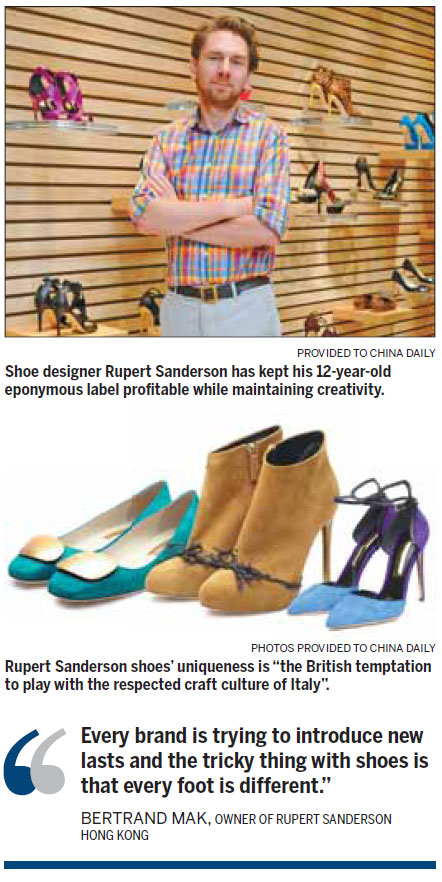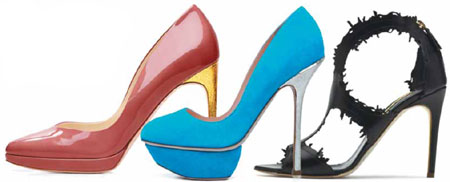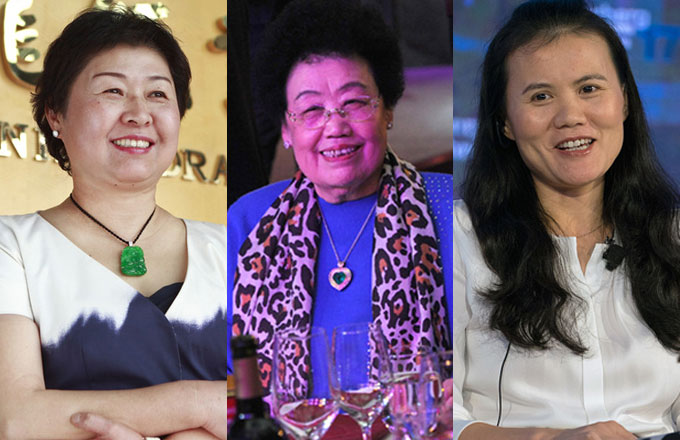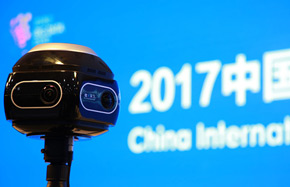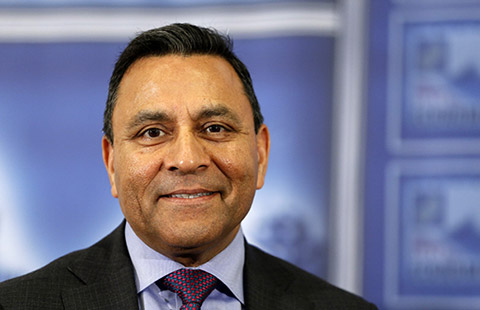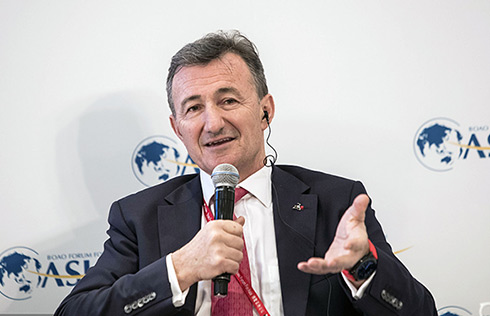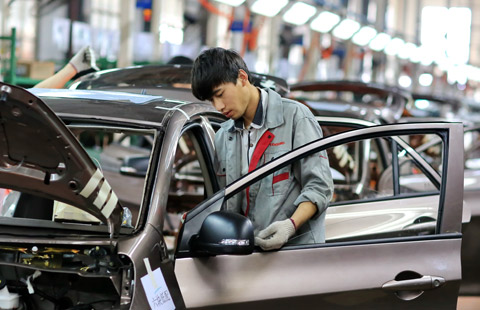The game's afoot
London shoe designer says reliability is key to competing in luxury markets from Europe to Asia, Kitty Go reports in Hong Kong.
How does an independent niche brand stand out and not ship out in today's retail environment of mega brands and monolithic flagship stores? London-based shoe designer Rupert Sanderson has managed to keep his 12-year-old eponymous label profitable while maintaining creativity. He describes his business as "a cross between art and commerce".
"I'm a craftsman and artisan but also a businessperson and the face of the brand ... It takes so much of a personality and an individual to drive the business," he says.
Building and distributing a brand globally is easier said (and dreamed of) than done. As Sanderson and Bertrand Mak, owner of Rupert Sanderson Hong Kong and partner of Brand Asia, tell their story several fundamentals arise that may also apply to the success of other niche, luxury brands.
The first is having a good and reliable product, which is not limited to beautiful designs and catchy names (every shoe is named after a type of daffodil). Unlike handbags and accessories which are not sized - and unlike clothing which can be altered - there is very little anyone can do about the fit of a shoe.
"Women are very loyal to the fit of a brand," says Mak. "Every brand is trying to introduce new lasts and the tricky thing with shoes is that every foot is different."
Then there is the quality of materials and production. Not immediately visible to the naked eye, Rupert Sanderson's basic court shoes (pumps) and flats are made of a single piece of leather, which uses considerably more material and thereby increasing the cost. Each shoe is also handmade in Italy and involves 120 processes.
"It pains me to see simple courts that are badly made and other brands charge you HK$ 8,000 ($1,030) or they charge you python prices for stitched-up water snake and nobody notices!" rants Mak.
Then there are details that would escape the untrained eye - a simple flat would have not just a box-toe but one with pinched sides inspired by "hospital corners", those precise corner folds on hospital beds. Or the brand's iconic laser-cut, unadorned stiletto Estelle that wraps the foot like a booty with the open sexiness of a sandal.
There is also the brand's position of being "designed in London and made in Italy".
Sanderson likes to describe his shoes' uniqueness as "the British temptation to play with the respected craft culture of Italy" and finds that "the combination of the two is appealing".
Another advantage the brand has on the manufacturing front is that it owns a factory in Bologna, Italy, so it can keep quantities low and quality high.
Rupert Sanderson is completely self-financed, has four freestanding shops and is distributed over 100 department and specialty stores worldwide.
"The idea of partnerships by region now is a very serious thing to consider because we don't have big investment behind us. Our business has gotten to where it is with retail and wholesale and significant website sales. We've done all right getting it to where it is today," explains Sanderson, who started his business from scratch and has such a personal connection to it that he feels he will have to "almost fall in love with the person doing the approaching (for partnership or selling the company)".
Mak brought the brand to Hong Kong three years ago, opening a shop on On Lan Street in Central, which to this day caters mostly to locals, a rarity in the Hong Kong retail scene.
Today, there is also a shop in Elements mall in Kowloon, which has its fair share of Chinese mainland customers who, as Mak painfully admits, "is not yet a sophisticated market and puts more importance on celebrity endorsement and if the shoes look expensive enough or recognizable".
Mak summarizes what most retailers already know and talks about buying patterns not unlike those in other parts of the world, "Customers want their money's worth and if they buy a shoe for HK$ 6,000, they should be able to get a lot of use out of it. There is a customer that really wants something unique and in-your-face but I would say that is only 1 percent of our business.
"Often they see a particular shoe of the season, look at it, try it on but they will end up buying a simple court or basic flat."
Sanderson explains, "Although they may not buy the fashion-forward pieces, they have to be in there. When a woman buys a court or low-heeled shoe or flats, there should be the magic from the crazy shoe that is evident in the flats."
Rupert Sanderson shoes do not have obvious design details like brightly colored soles, logos, pilgrim or rhinestone buckles, that would instantly identify a brand. In fact, it was only last year that the designer decided it was time to subtlety "communicate handmade in Italy with a branding device that did not compromise individual design".
He chose to use a benchmarking device from carpentry that involves a smear of gold paint as if done with a thumb, in the inside of each heel. Mak, on the other hand, started selling a collection of shoes with heels coated in 24-karat gold leaf only available in Hong Kong.
"I think it is essential for each brand to have a signature, not necessarily a logo, that people can recognize. This (gold heel) has not been done by other brands because it is expensive to do, labor intensive and delicate," Mak explains.
"How do you stand out among your friends with something unique?" asks Mak, who then answers, "This is where we come in with our products and controlled quantities. Two ladies bumping into each other wearing the same pair of (our) shoes is extremely low unlike with Louboutin or Roger Vivier. But it's ultimately about business which comes with growth. There is a delicate balance between exclusivity, who you sell to and your buys, yet we have to be a viable business to stay afloat in this competitive market."
|
British label Rupert Sanderson has been known to more Chinese consumers since its first shop in Hong Kong opened in 2010. Photos Provided to China Daily |
